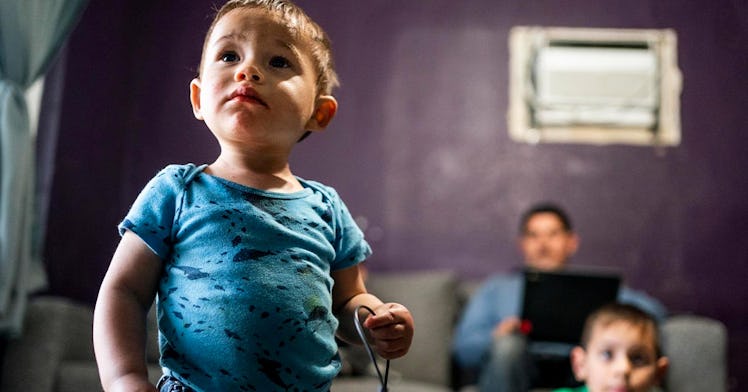COVID-Era Aid Programs Cut Child Poverty by a Quarter in a Single Month
It turns out simply giving people money is a great way to lift them out of poverty.

Last month, the parents of 59.3 million children, roughly 80 percent of all children in the United States, received their first monthly advance payment of the new child tax credit. Passed as part of the American Rescue Plan signed by Joe Biden into law in March, a principal goal of the credit was reducing child poverty in the United States. And, according to one analysis, that’s exactly what it’s doing.
The Center on Poverty & Social Policy at Columbia University found that the payments—worth up to $350 per child, based on their age and their parents’ income—kept three million children above the poverty line on their own. Together with other COVID-related economic relief measures, the total number of children kept out of poverty last month was six million; without those measures, the monthly child poverty rate would have been 8.1 percentage points higher.
It’s a fairly stunning result, and things could be even better than what the data shows. That’s because the CPSC uses a monthly measure of poverty “based on the resources a family receives in a given month,” which actually could underestimate the poverty reduction effect of the child tax credit.
And speaking of estimation, researchers had to estimate the total number of children who received the child tax credit since that information has not been made available by the IRS as of yet. Their models pointed to 67 million children being eligible for the credit in total and around 7.7 million not receiving it last month. Those most likely to not receive the payment are non-filers who don’t receive it automatically and haven’t used the non-filer tool set up by the IRS for this purpose.
It’s likely, then, that the August child tax credit payments went out to even more kids as more parents signed up for the benefit. Researchers estimated that if all 67 million eligible kids received the first payment, it would have lifted 4.7 million kids out of poverty.
To sum up, the first month of data shows how effective the child tax credit is at reducing child poverty. It also reveals, however, just how much more work is to be done in ensuring that all of the Americans who are eligible—especially those who don’t have enough income to file taxes, a particularly vulnerable group that particularly benefits from this kind of cash infusion. And it highlights the fact that the Child Tax Credit should absolutely be permanent — for the benefit of kids and families everywhere.
We are mere weeks from seeing how many more parents accessed the benefit in August—and how much more of a dent will be made in the child poverty rate.